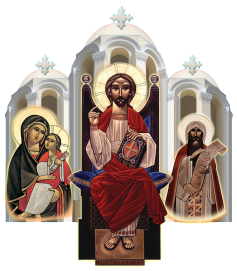On the 6th Day of the Blessed Coptic Month of Tobe, the Church joyously observes the Feast of the Circumcision. This Minor Feast marks the circumcision of Jesus, following the Jewish tradition of performing this act on the eighth day after His birth. The Gospel of Luke notes this significant event, stating, “And at the end of eight days, when He was circumcised, He was called Jesus, the name given by the angel before He was conceived in the womb” (Luke 2:21 ESV).
The practice of circumcision, originally established by God during the time of Abraham as a covenant sign, involved the removal of the foreskin. God’s instructions to Abraham emphasized its importance for generations to come: “This is my covenant, which you shall keep, between me and you and your offspring after you: Every male among you shall be circumcised. You shall be circumcised in the flesh of your foreskins, and it shall be a sign of the covenant between me and you. He who is eight days old among you shall be circumcised.” (Genesis 17:10-12)
In the New Testament, however, the practice of circumcision gives way to Baptism. St. Paul clarifies this shift, stating, “For neither circumcision counts for anything, nor uncircumcision, but a new creation” (Galatians 6:15 ESV).
Despite this shift, the significance of Jesus undergoing circumcision lies in His role as the “Redeemer” or “Redeemer of the Law.” Christ, by subjecting Himself to the Law and fulfilling the covenant with Abraham, reclaimed salvation for humanity. St. Paul underscores this in Galatians 4:4-5, “But when the fullness of time had come, God sent forth his Son, born of woman, born under the law, to redeem those who were under the law, so that we might receive adoption as sons.”
St. Athanasius the Apostolic interprets circumcision as a symbol of the future baptism through Christ, where the old birth is stripped off. He writes, “For circumcision expressed nothing else, but the stripping off of the old birth, seeing that part was circumcised which caused the birth of the body. And thus, it was done at that time as a sign of the future baptism through Christ.” By being circumcised, Christ obediently adhered to the covenant, paving the way for the new man through Baptism.
In His humanity and divinity, Christ immersed Himself in the human experience, subjecting Himself to the law that bound us. St. Cyril the Great explains this, stating, “Christ, as one of us, delivered Himself to the law; for it is befitting of Him to fulfill all righteousness; He took over Himself the image of a servant, came to be one of us, we, who by nature were under the yoke of the law.”
As we reflect on the Feast of the Circumcision, let us delve into the profound significance of this moment—a secret of redemption and salvation. Christ, by undergoing circumcision, redeemed the law, allowing all people, both Israelites and Gentiles, to receive the precious gift of salvation.
Sources:
- Coptic Synaxarium, 6th of Tobe
- Bible, English Standard Version
- Catena Bible (Church Father Commentaries)
- Commentaries on The Gospel According to St. Luke by Fr. Tadros Yacoub Malaty
- https://www.stvnashville.org/circumcision-feast
